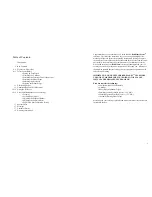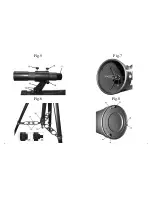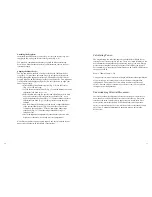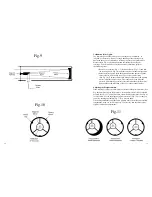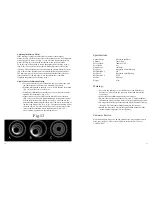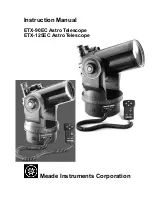
Adjusting the Primary Mirror:
If the telescope is properly collimated you should see the diagonal
mirror (See Fig. 10) at the exact center of the primary mirror. If the diagonal
mirror appears off-center (See Fig. 11) you will need to adjust the primary
mirror (See Fig.9) located on the outside lower-end of the main tube.
To do this you will first need to loosen the primary mirror locking screws
(Fig. 8-28). These are the screws that are flush against the surface of the
telescope. Then alternately loosen and tighten the primary mirror tilt screws
(Fig. 8-29) until the diagonal mirror is centered inside the primary mirror.
The primary mirror tilt screws are easily identified because they stick out
from the surface of the telescope. Once the adjustment is complete,
re-tighten the primary mirror locking screws.
Night Time Star Collimation Testing:
• To test the accuracy of your collimation, equip your telescope with
the 20mm eyepiece and focus on a moderately bright star.
• With the star centered in the field of view, slowly turn the focus knob
(Fig. 1-4) until the star is out of focus.
• If properly collimated, you should see a series of concentric circles
around a black center dot (Fig. 12-C).
• If the circles are not concentric and the black dot is not centered
(Fig. 12A) you will need to make adjustments to the primary mirror.
Loosen the primary mirror locking screws (Fig. 8-28) and use the
horizontal and altitude adjustments to move the circles to the edge of
the telescope field of view (Fig. 12-B). Then turn the primary mirror
tilt screws (Fig. 8-29) until the black dot moves to the center of the
image with the concentric circles radiating from it (Fig. 12-C).
Once centered, tighten down the locking screws.
Specifications:
Optical Design:
Newtonian Reflector
Aperture:
76mm (2.99”)
Focal Length:
700mm (27.56”)
Focal Ratio:
9.21
Finder Scope:
10x30mm
Eyepiece 1:
Huygenian 20mm Erecting
Magnification 1:
35x
Eyepiece 2:
Huygenian 8mm Erecting
Magnification 2:
87.5x
Mount:
U Mount
Weight:
8 lbs.
Warnings:
• Never use this telescope (or its viewfinder) to look directly at or
near the sun. Viewing the sun can cause instant and irreversible
eye damage.
• Always supervise children when using this telescope.
• Do not leave telescope unattended at any time. Untrained adults or
children may not be familiar with the correcting operating procedure.
• Do not point the telescope at the sun even when you are not looking
through it. This will cause internal damage to the telescope.
• Handle this telescope with care. Rough handling might knock the
internal optical components out of alignment.
Customer Service:
We will be happy to help you with any problems you may experience while
using your telescope. Please call our toll-free customer service line at
1-800-967-8427.
17
16
Fig.12
Summary of Contents for RP-100
Page 3: ...Fig 1 Fig 3 Fig 2 5 4 Fig 4...


